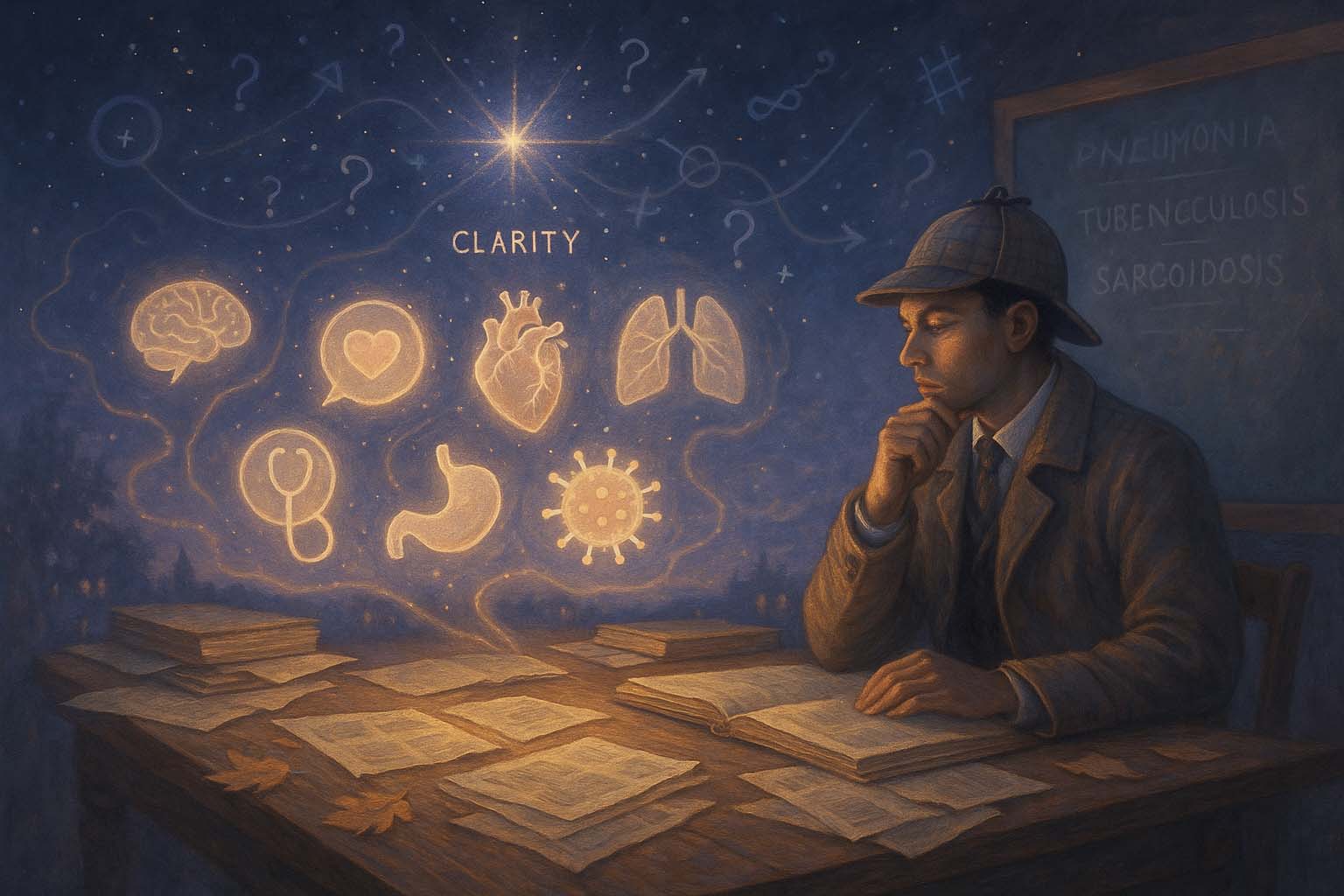
Differential Diagnosis
- The Art of Deduction
🧠 The Detective’s Guide to Diagnosis
The clues are in. The witness statements have been taken. The lab has returned its results.
Now comes the moment that defines every great detective—not just gathering data, but seeing the pattern it forms.
This is the art of diagnosis.
Where facts meet instinct. Where knowledge meets nuance.
Where you, the clinical detective, step back from the whiteboard of symptoms and ask:
What’s the most likely explanation? What else could it be? What am I missing?
🧩 Building a Differential: Lining Up the Suspects
Before making any arrest, a good detective assembles a list of suspects—so too does a good doctor.
Your differential diagnosis is a ranked list of possibilities:
- The most likely culprit (based on story, signs, and tests)
- The must-not-miss condition (because its consequences are severe if overlooked)
- The red herrings that seemed plausible but don’t quite fit on closer inspection
For example:
- Chest pain? Is it angina, pulmonary embolism, reflux, or panic attack?
- Abdominal pain? Could it be appendicitis, ectopic pregnancy, renal colic, or IBS?
A differential isn’t a sign of uncertainty—it’s a mark of disciplined curiosity.
🧮 Clinical Formulation: Telling the Story Behind the Story
Beyond naming the condition, a skilled diagnostician must understand why this happened to this patient now.
This is your formulation—the detective’s case theory:
- Predisposing factors: What made the patient vulnerable?
- Precipitating factors: What triggered the onset?
- Perpetuating factors: What’s keeping the problem going?
- Protective factors: What strengths might aid recovery?
A 55-year-old man presents with a heart attack. Your diagnosis is clear. But your formulation might include:
- Predisposing: Hypertension, smoking, family history
- Precipitating: Recent job loss and stress
- Perpetuating: Poor access to healthcare
- Protective: Supportive family, high motivation for change
Diagnosis gives the name.
Formulation gives the meaning.
🧠 Pattern Recognition vs. Analytical Reasoning
A great detective switches lenses depending on the case:
- Pattern recognition: “I’ve seen this before.” Fast, intuitive, efficient. But risky in unusual presentations.
- Analytical reasoning: Slow, methodical, comparing each finding against known diagnostic features.
In medicine, both modes are essential. The expert clinician knows when to slow down—especially when something doesn’t quite fit.
If the patient looks well but the numbers scream danger… pause.
If the story sounds routine but a detail seems off… investigate.
Suspicion is your greatest ally.
❗ Red Flags and Rare Twists
Good detectives don’t just pursue the most obvious answer. They stay alert for:
- Red flag symptoms: sudden onset, weight loss, neurological signs, night sweats, bleeding, syncope.
- Zebras in disguise: rare diseases masquerading as common ones, or dual pathology confusing the picture.
Differential diagnosis protects you from premature closure.
Formulation protects you from reducing the patient to a label.
Together, they sharpen your focus before you reach for treatment.
🕯️ Final Word from Medlock
The art of diagnosis is not just clinical—it is creative. It is where logic meets humanity.
It is not about proving you’re right—it’s about ensuring you haven’t missed what’s wrong.
So pause. Review the evidence. Revisit the scene.
Before prescribing, commit to the greatest act of medicine:
Thinking clearly.
